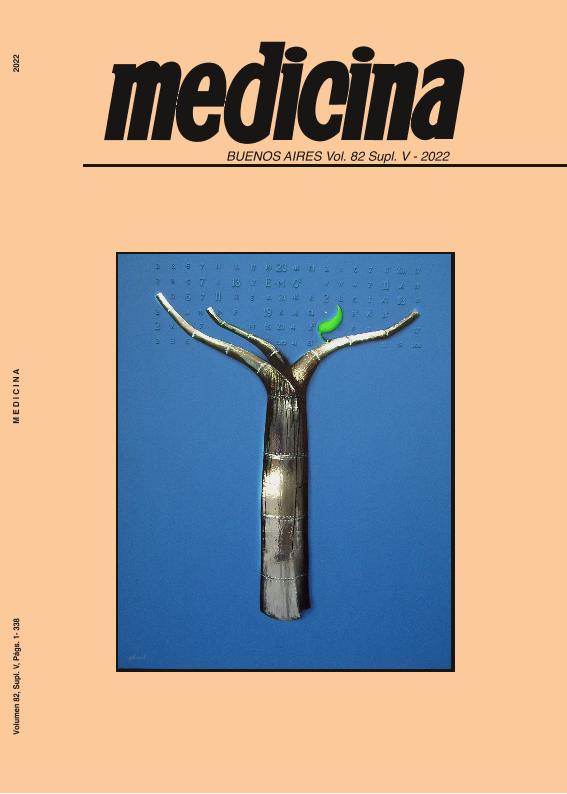Evento
Omega 3 mitigation on deficient hypoxic-ventilatory response (HVR) induced by moderate ethanol doses in an animal model equivalent to the third trimester of human pregnancy
Tipo del evento:
Reunión
Nombre del evento:
LXVII Reunión Anual de la Sociedad Argentina de Investigación Clínica; LXX Reunión Anual de la Sociedad Argentina de Inmunología; 3er Congreso Franco Argentino de Inmunología y Reunión Anual 2022 de la Sociedad Argentina de Fisiología
Fecha del evento:
16/11/2022
Institución Organizadora:
Sociedad Argentina de Investigación Clínica;
Sociedad Argentina de Inmunología;
Sociedad Argentina de Fisiología;
Título de la revista:
Medicina (Buenos Aires)
Editorial:
Fundación Revista Medicina
ISSN:
0025-7680
e-ISSN:
1669-9106
Idioma:
Inglés
Clasificación temática:
Resumen
Maternal ethanol (EtOH) intake during pregnancy and lactation is a highly frequent "social" behaviour in Argentine, expounding fetus or neonates to moderate EtOH intoxication through amniotic fluid and maternal milk. Early exposure to EtOH triggers in the organism a spectrum of neurobehavioral dysfunctions affecting, also, the breathing response. Hypoxia acts as an environmental stressor eliciting breathing adaptations, like Hypoxic Ventilatory Responses-HVR, that may be altered by the EtOH exposure. One of the detrimental effects of early EtOH exposure is the reduction of the Omega3-O3 levels in the CNS. Experiment 1: Pups were intoxicated with 2.0g/kg or 0.0g/kg of EtOH, ig at postnatal days (PDs) 3-5-7-9. At PD9, also were subjected to a hypoxic event [5 min of initial normoxia, followed by 3 episodes of hypoxia (O2 8%) of 5 min, separated by periods of recovery-normoxia of the same duration]. Breathing frequencies and apneas were recorded in a whole body plethysmograph at PDs 3-5-7 x 5 min and at PD9 x 35 min of test. Experiment 2: The same experimental protocol of EtOH exposure at PDs 3-5-7-9 was employed. However, at PDs 3-5-7, pups received 0.0 or 720 mg/kg O3 (ig), 20 min after EtOH administration. At PDs 5 and 7, EtOH-intoxicated pups elicited a breathing depression that was not affected by the O3 administration. During the hypoxic challenge, EtOH-exposed pups expressed a significant breathing depression during initial normoxia and also at each hypoxic event (i.e. a reduced HVR) relative to it expressed in vehicle-exposed pups (p<0.05). Preliminary results indicated a restoration of the HVR in pups exposed to EtOH with O3. A significant increase in the number of apneas in EtOH intoxicated pups was observed after the 2nd and 3rd hypoxic events. At these periods, a protective O3 effect was observed by a reduction in the number of apneas in EtOH-intoxicated pups. These results seem to indicate a mitigation due to O3 upon deleterious EtOH effects in the neonatal HVR. Funding by MINCyT-Cba; FONCyT and SECyT-UNC.
Palabras clave:
HYPOXIC-VENTILATORY RESPONSE
,
NEONATES
,
OMEGA 3
,
ETHANOL EXPOSURE
Archivos asociados
Licencia
Identificadores
Colecciones
Eventos (IIPSI)
Eventos de INSTITUTO DE INVESTIGACIONES PSICOLOGICAS
Eventos de INSTITUTO DE INVESTIGACIONES PSICOLOGICAS
Citación
Omega 3 mitigation on deficient hypoxic-ventilatory response (HVR) induced by moderate ethanol doses in an animal model equivalent to the third trimester of human pregnancy; LXVII Reunión Anual de la Sociedad Argentina de Investigación Clínica; LXX Reunión Anual de la Sociedad Argentina de Inmunología; 3er Congreso Franco Argentino de Inmunología y Reunión Anual 2022 de la Sociedad Argentina de Fisiología; Mar del Plata; Argentina; 2022; 67-67
Compartir




